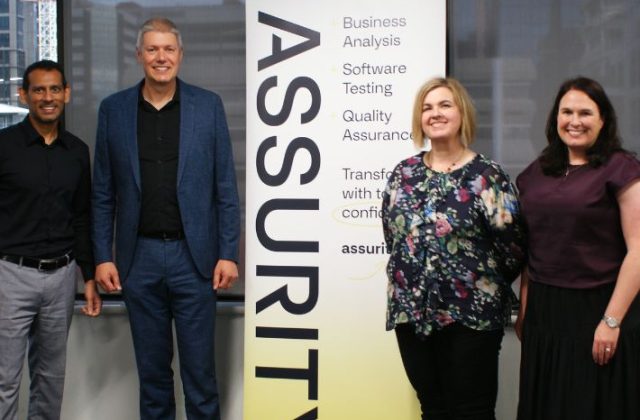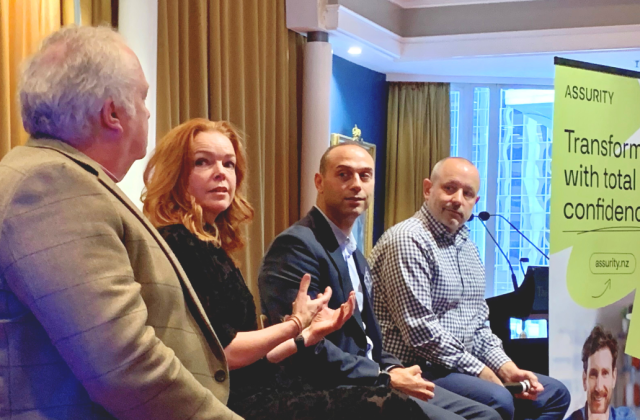Date: 27 February 2020
The average person will make five career changes in their life and this number is predicted to increase. Making a career change might be a simple statement to make but, in reality, the path to a successful career change is often ambiguous and hard to navigate at best.
Having recently gone through my third career change, I wanted to share my story and observations to help others determine their own path with some practical guidance and steps.
The concept of a π (Pi)-shaped career. Why is this an important concept?
Exponential growth in technology and the rate of change in the world of work has led to an explosion of new skill requirements in the workforce and, with it, an ever-evolving list of job titles.
Most of these titles didn’t exist 10 years ago. The life of a job title is diminishing as we move from projectionists to cinema technicians, from land surveyors to drone pilots and Chief Information Officers to Chief Digital Officers.
As Assurity CEO Garth Hamilton explains in this article, “This exponential change affects every organisation and every individual. If organisations cannot respond to the changing needs and desires of those individuals, they’ll risk becoming irrelevant.”
The concept of a ‘T-shaped’ person appeared a number of years ago to recognise the need for people to focus on developing a broader set of skills and capabilities, whilst leveraging a core depth of knowledge and experience.
π is the evolution of this. The idea that you can leverage two areas of deep capability to help navigate the world of work and be better placed to respond to changes that appear in a chosen career. The image below demonstrates this through an example from the military.

Here’s what my situation looked like about three years ago, the π representing where I wanted to get to.

Two-and-a-half years ago, I was lucky enough to have the opportunity to move into a new role which had less focus on my original depth of experience (recruitment), essentially propelling me into a steep learning curve that focused on developing the π profile pictured above right.
Here are the key things I did to start and help me on this journey…
Step 1: Are you ready? Reflect on your mindset
“The problem human beings face is not that we aim too high and fail, but that we aim too low and succeed” – Michelangelo
When I look back at my past self, it’s clear that I had created my own barriers to develop skills and capability in new areas through my own mindset. I was looking at my career options with a fixed mindset believing that my past experience would limit my options. Looking back, no one was telling me this. It was an internal belief. It was clear that adopting a growth mindset and believing that I could be the master of my own career, was the starting point for making change happen.
If you’ve never heard of a growth mindset, I’d recommend completing this learning module which my talented colleague Lorna Proctor (Senior L&D Consultant at Assurity) introduced me to.
Step 2: Look for overlaps
In any role, there are opportunities. These typically present themselves as overlaps. Areas that you touch on in your role, align with your end goal, but that you’re either not accountable for or don’t always have time to focus on.
In my case, these overlaps were specifically in our remuneration framework and in onboarding staff.

The image above isn’t an exhaustive list as it’s hard to put responsibilities into boxes. It’s simply a way to show you that every organisation, role and responsibilities will offer their own overlaps. You just need to be looking for them. Complete the following activity to locate your π.
Draw two empty circles that overlap as above. List core responsibilities for your current role and the area you’d like to develop depth of knowledge in. Then see what falls in the overlap.
Step 3: Check your environment
Now that you’ve identified some overlaps, it’s time to sound out the environment. Ask yourself these questions…
Are people around you open to sharing knowledge? Does the organisation you work for encourage collaboration, different ideas and perspective?
I was very fortunate to work with a team at Assurity who ticked all these boxes. It allowed me to feel confident that I was in an environment where I would be set up to succeed in my goal. A place where it was safe to fail and where I could put myself out there to accelerate my learning.
Step 4: Be curious
Responsibility in new areas and opportunities are rarely placed in your lap. It’s up to you to seek these opportunities out.
Being curious means asking questions, but it also means prioritising your personal learning journey so that you’re in a position to add value.
I’ll use our remuneration framework as an example. In my recruitment role, I had valuable insights about a new hire, their motivations and how they were assessed during selection. This gave me a window of opportunity to add value to our remuneration moderation process (by committee). To have credibility to attend this forum, it was important I spent time learning about market data, where we sourced this data from and how other organisations created a fair and consistent approach to their remuneration philosophy.
I attended an external training course a few months before this committee meeting to give me foundational knowledge.
I was able to make recommendations based on this learning, including considering how we better use our moderation data so that we had a visual way to see how our people were tracking relative to the market.
This is just one example where focused curiosity and self-learning can help you build more depth and incrementally develop yourself to reach your desired π. For 24 months prior to changing roles, I became a regular attendee of our moderation meeting as my opinion was valued. This allowed me to develop capability and build enough experience in remuneration to consider it a second area of depth.
Step 5: Expand your capability mix
It’s important to continually reflect on your progress and areas of capability depth. Work is always changing – and with change comes constant opportunity.
Here at Assurity, we’ve adopted retrospectives. Every quarter we reflect on the outcomes we were looking to achieve, what worked, what didn’t and look to take one new thing into the next quarter.
Working in shorter cycles on your development goals allows you to either focus on building depth of experience or try something new.
Two years ago, Assurity implemented a Human Capital Management system. As a small team, this again represented an opportunity for me to develop skills and experience in an area outside of my core role.
I took this opportunity and immersed myself in the world of HR tech. I had to learn about data management, change management and people analytics.
Whilst I wouldn’t say that HCM systems are an area that I have deep experience in, the exposure enabled me to broaden my experience on my journey toward my π.
Step 6: Agree on the tipping point
To achieve your goals, it’s important to measure the right things and to agree on the tipping point. When are my skills and experience now more relevant to my new chosen career path?
This conversation with your manager includes questions such as ‘What would I need to be doing in order to be ready for that type of challenge?’
If you’re measuring the right things, it will become clear when you’re ready to take the plunge.
Don’t expect your manager or organisation to create the opportunity for you. In some cases, it could lead to a promotion or a role change but, in other cases, you might need to find that next opportunity elsewhere in the market. Ultimately, good leadership is about setting you up for success unconditionally whether that benefits the organisation or not. Why? Because helping people transcends organisations and geographies. If we’re all future ready, then everyone wins.
If you’d like to know more, the concept of a π-shaped career is one of many concepts explored in the Assurity Agile in HR course. If you are reading this post and you’re a People Leader with an interest in making your people awesome, explore the course content here.
References I found useful:














